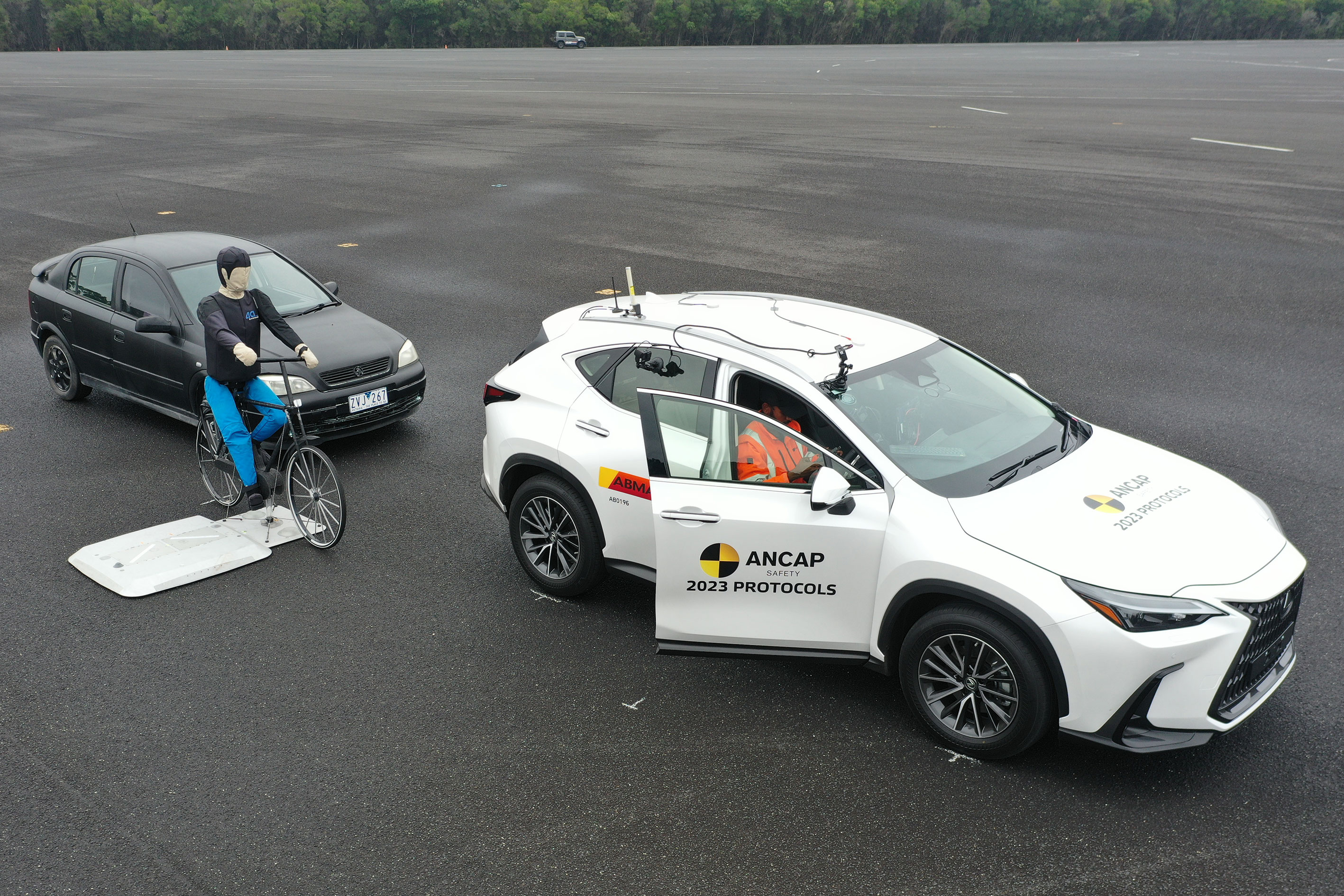ANCAP adds car safety testing to protect bike, scooter riders
New ANCAP safety tests designed to encourage technologies to prevent car doors being opened in the path of cyclists.

‘Dooring’ is a term that most Australians are probably unfamiliar with, but if you’re a cyclist travelling on public roads and bike paths, it’s a very real threat to be wary of on every ride.
Dooring refers to vehicle occupants opening car doors without first checking for approaching cyclists, usually from behind, creating a potentially life-threatening accident hazard for cyclists, scooter riders and others.
According to the cycling website bicyclenetwork.com.au dooring is one of the most common crash causes for riders, because bike lanes often overlap the door zone, or the space taken by the open door of a parked vehicle.
To reduce the risk of these dooring crashes the Australasian New Car Assessment Program’s (ANCAP’s) new 2023–25 test and rating criteria will encourage the inclusion of anti-dooring technology in all new vehicles.
The independent safety organisation will assess the presence and effectiveness of anti-dooring technology on all vehicles rated from 2023, as part of its routine safety rating process.
The vehicle being tested must alert the occupants of a cyclist approaching from behind – either through visual ‘information’ displayed in the field of view of the front side window (e.g. warning light on door); an audible and/or haptic ‘warning’ alert; or by physically preventing occupants from opening the door (either driver door only or all doors) through a lock delay or two-stage door handle.
The new test scenarios feature a cyclist approaching a parked test vehicle from behind at 15km/h, with tests to be conducted on both sides of the vehicle.
The test protocol requires a second obstruction vehicle to be parked 2m behind the test vehicle, and for the cyclist dummy to travel along the road, parallel to the parked vehicles at a 1m distance from the side of the test and obstruction vehicles.
According to ANCAP, performance in these tests contributes one point to the potential nine points scored for the AEB/AEB cyclist category.
This score contributes to the overall star rating through the Vulnerable Road User Protection pillar, with a 70% threshold required in the latter for a vehicle to be eligible for five stars in 2023.
ANCAP CEO Carla Hoorweg said dooring was a serious risk for cyclists, particularly in cities and other built-up shared zones.
“One of the ways we can help prevent these incidents is to encourage in-car technology that reminds car drivers and their passengers to check for cyclists before they exit their vehicle and where there is a real risk, temporarily prevent them from opening their door until the cyclist has passed,” Ms Hoorweg said.
A small number of brands, including Audi, Lexus and Kia, currently include anti-dooring technology on some models, as do the facelifted Hyundai Santa Fe and new Mazda CX-60, but Ms Hoorweg said this number was likely to increase significantly with the new requirement.
Related topics
Things to note
The information in this article has been prepared for general information purposes only and is not intended as legal advice or specific advice to any particular person. Any advice contained in the document is general advice, not intended as legal advice or professional advice and does not take into account any person’s particular circumstances. Before acting on anything based on this advice you should consider its appropriateness to you, having regard to your objectives and needs.


